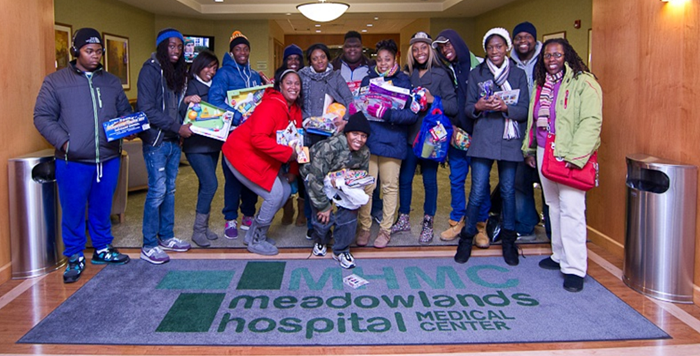Quantum Opportunities: Replication Success

Baltimore Quantum Associates
Quantum Opportunities is a youth development model for at risk minority high school youth. Quantum originally was developed decades ago by the Ford Foundation. The Eisenhower Foundation modified the design of Quantum and replicated the model in Albuquerque NM, Baltimore MD, Boston MA, Milwaukee WI and New Bedford MA from 2010 to 2014.
In a randomized control design (N=300), Quantum program participants (called Associates) achieved significantly higher grades than control youth and were significantly more likely to graduate from high school, be accepted into two or four year colleges, enroll in college, and remain in college for one academic year or more. The statistical significance was high – at p. <.001. The positive outcomes held for both young women and young men – as well as for both African Americans and Latinos.
Quantum provided comprehensive, wrap around multiple solutions – intense individual and group mentoring, tutoring and homework assistance, college preparation, life skills training, youth leadership training and modest financial stipends over all four years of high school. Each of the components appeared to be implemented with fidelity. The components appeared to reinforce one another, creating a kind of synergy. Quantum was framed as a youth investment and youth development program that included mentoring as only one of its interventions.
Eisenhower Quantum demonstrated that indigenous, inner city nonprofit organizations with solid institutional capacity are capable of replicating a multiple solution, long term, youth development initiative. The implementing nonprofit organizations were able to facilitate significant positive educational change in spite of the challenges faced by many inner city schools.
Eisenhower Quantum has emerged at a time when serious urban school system controversies continue over administrative organization, charter schools, testing, teacher training, teacher union power and a host of related issues. Quantum avoids many of the institutional debates – because Quantum is community nonprofit based, not school based.
Because of the high statistical significance of the findings from the 2010-2014 evaluation of Quantum, the Blueprints for Healthy Youth Development initiative at the University of Colorado has designated Quantum a promising program: http://www.blueprintsprograms.com/factsheet/eisenhower-quantum-opportunities-program. Blueprints for Healthy Youth Development only approves about five percent of programs reviewed.
In examining what works for juvenile justice, the Office of Justice Programs CrimeSolutions compendium identified Quantum as an exemplary evidence-based model with the highest possible rating, as posted on the official Justice website: http://www.crimesolutions.gov/ProgramDetails.aspx?ID=426.
The National Mentoring Resource Center also designated Quantum a national model. In its peer review commentary, the National Mentoring Resource Center observed: http://www.nationalmentoringresourcecenter.org/index.php/insight-display/105.
[The Eisenhower Foundation Quantum evaluation report] is a treasure-trove for practitioners, full of all kinds of useful tips, such as the perception across sites that the program’s emphasis on graduation, not grade improvement, as the primary goal really helped youth feel more comfortable in the program. Apparently, working slowly toward the long-term graduation goal, with long-term support, felt like a better starting point than emphasizing immediate academic improvements. That makes sense, yet it’s the type of subtle distinction in program design that probably would have gone completely unmentioned had this evaluation not included qualitative data. One can hope that future efforts funded by both private philanthropies and public agencies like OJJDP [the Office of Juvenile Justice and Delinquency Prevention at the Department of Justice] will include similarly detailed and useful information on program replications and implementation in their evaluation reports.
Quantum was designated, as well, as an exemplary model at the White House My Brother’s Keeper What Works Showcase in 2016. (https://obamawhitehouse.archives.gov/sites/whitehouse.gov/files/documents/MBK%20Program.pdf)
Based on the positive educational outcomes and the great need in American inner city high schools, Quantum would appear to merit further replication and scaling up.
Accordingly, the Eisenhower Foundation now is technically assisting the replication of Quantum on the South Side and West Side of Chicago. Here is the Table of Contents of the Chicago Quantum replication guide.
